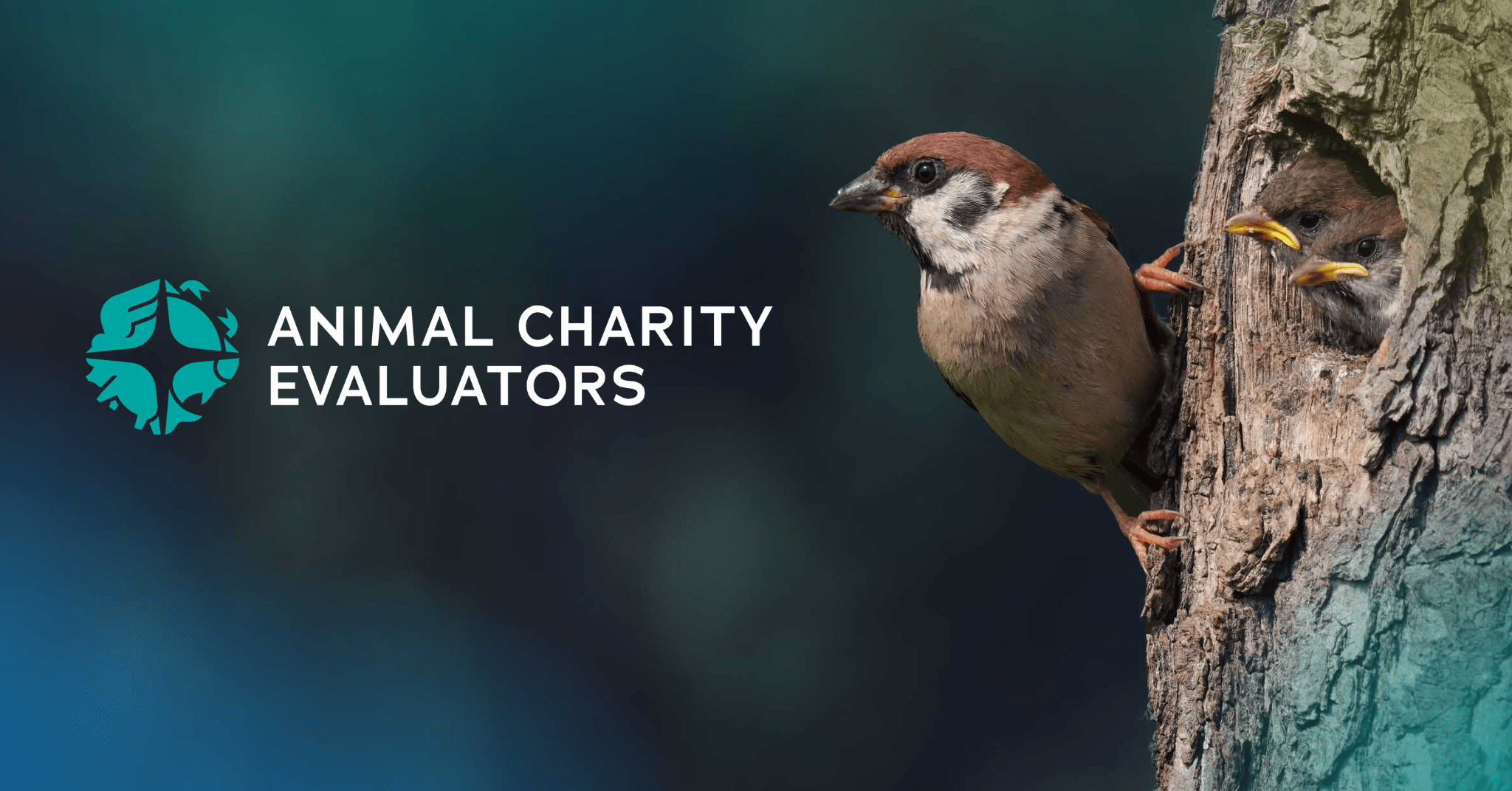Hi! We're researchers from Animal Charity Evaluators (ACE), and for the next two hours, we'll be answering questions about our 2024 charity recommendations and our charity evaluations process.
Our team answering questions is:
- Elisabeth Ormandy, Programs Director
- Vince Mak, Charity Evaluations Manager
- Maria Salazar, Senior Researcher
- Max Taylor, Researcher
- Zuzana Sperlova, Researcher
How to participate? Make sure you've created a FAST Forum account and post your questions in the comments section.
We look forward to answering your questions!
For a limited time, all donations to our Recommended Charity Fund will be matched! Your support will help all 11 of our Recommended Charities that we estimate will have an exceptional impact for animals with additional donations. Thank you for your support and for caring about creating a kind world for animals.




That’s a great question and one that we spent a lot of time considering in this year’s round of evaluations. We aimed to use SADs in all cost-effectiveness analyses and attempted to find a way to quantify each charity’s impact using the SADs unit. We have found that for more indirect work, such as GFF’s programs, quantifying the number of animals affected is largely speculative and requires a number of assumptions. For these cases, we decided to not make the assumptions needed to estimate the SADs averted but to stop at an intermediate unit in the analysis. For GFF, this was the number of people reached through their programs per dollar. Our reasoning for avoiding highly speculative assumptions is based on one of our guiding principles, which is to follow a rigorous process and use logical reasoning and evidence to make decisions. For cases like GFF, we focused more on their Theory of Change analysis to guide our decision-making. We are excited about their work because China farms around 50% of the world’s farmed animals, and GFF has made inroads with getting animal welfare on the government’s agenda, which could have significant expected value in the long term (although we didn’t model this explicitly).
Overall, we believe that interventions with a long theory of change (such as some policy interventions) and meta-interventions are often too speculative to estimate the number of animals affected and therefore the SADs averted. This appears to be consistent with the existing research in the animal advocacy movement, where the existing cost-effectiveness estimates focus on direct interventions (corporate campaigns, institutional outreach) and avoid quantifying indirect interventions (research, movement building). We will review our methods in the coming months and will reconsider how we compare charities that do more indirect work.
— Zuzana